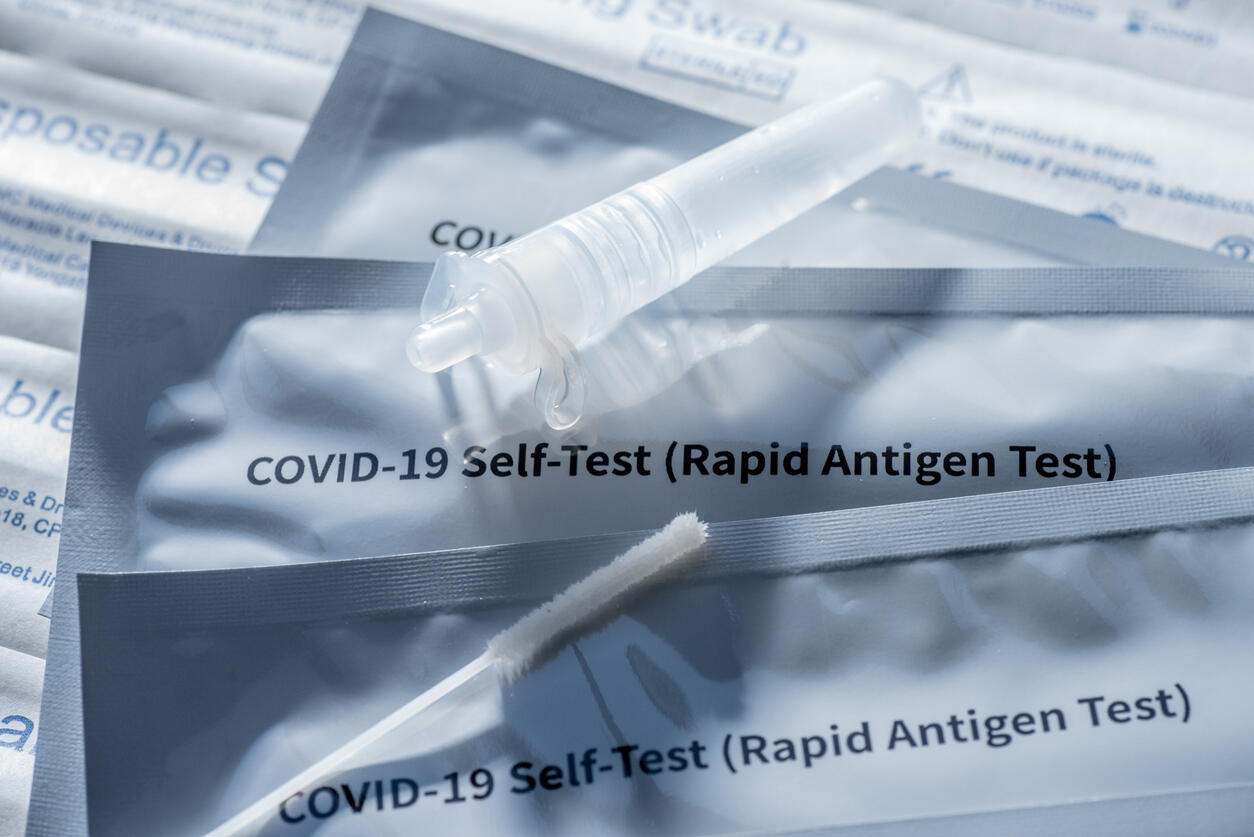
by Dr Caitlin Thompson, Postdoctoral Research Associate
During the COVID pandemic in the UK, we all became accustomed to swabbing our noses and throats and looking out for the two red lines that usually indicated we were infected with the disease.
Five years on, one of the few positive legacies to take from the biggest global health crisis in living memory is how well received these rapid point-of-care diagnostic tests became.
These quick, easy-to-use tests showed just how effective and accessible they can be for everyday people, which not only helped control the spread of disease but also set us up to better handle future health crises.
Rapid diagnostic tests played a crucial role in the COVID-19 response by quickly identifying a person infected with the virus and enabling them to isolate, stopping the spread to other people. Just five months after the first case of COVID-19 was reported, the first lateral flow test (LFT) was approved for emergency use.
I began working at the Liverpool School of Tropical Medicine (LSTM) in December 2020, during the UK’s third national lockdown. I had come from working in the diagnostic laboratory at the Manchester Royal Infirmary were thousands of COVID-19 tests were being processed, and it was clear that the burden being put on our NHS was unsustainable.
LSTM played a key role as a clinical evaluation site for new rapid diagnostic tests including LFTs. We recruited participants from the Liverpool John Lennon Airport NHS mass testing site in Liverpool, where the community showed incredible enthusiasm for getting involved in this research. It was an inspiring time, and it truly showcased the collaborative spirit of the city in the face of the pandemic.
This study along with others showed how effective and easy to use LFTs were. This led to the widespread adoption of LFTs for tracking and controlling the virus. In many high-income countries, including the UK, LFTs became the go-to method for COVID-19 testing.
Beyond COVID-19, LFTs had already been widely used for HIV screening and malaria detection, showing their versatility in diagnosing diseases. These successes raised the question: why can't they be rolled out for other pathogens, especially high consequence infectious diseases (HCIDs)?
LFTs are particularly valuable in low-resource settings where quick and affordable diagnostics are needed for managing outbreaks. Inspired by the work during COVID-19, I have focused on designing and developing lateral flow tests for HCIDs. One of the main projects, funded by The Pandemic Institute, has been the development of a lateral flow test for Crimean-Congo Haemorrhagic Fever Virus (CCHFV), a virus that currently does not have any point-of-care tests available to use.
Having had some great results in several rounds of clinical evaluations, the test is now going through the necessary regulatory assessments to ensure it meets all safety and quality standards. Once approved, it will be made available to anyone who may need it, particularly in regions where this deadly virus poses a significant risk.
LFTs can play a key role in managing future pandemics by allowing rapid identification and isolation of cases, even in low-resource settings. To be better prepared, we need to continue research and development in 'pandemic peacetime', refining these tests and building systems for their rapid deployment. This proactive approach ensures that, when the next pandemic strikes, we will have effective tools already in place, making a swift and coordinated response possible.